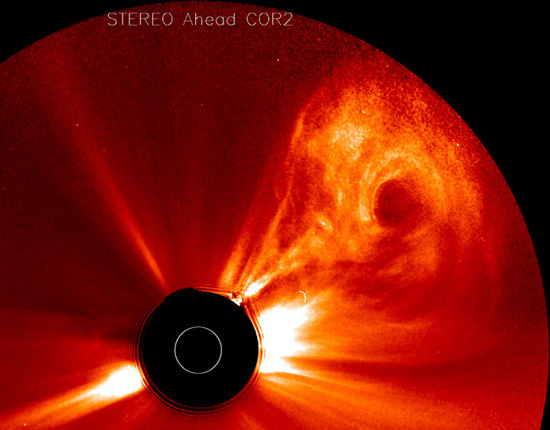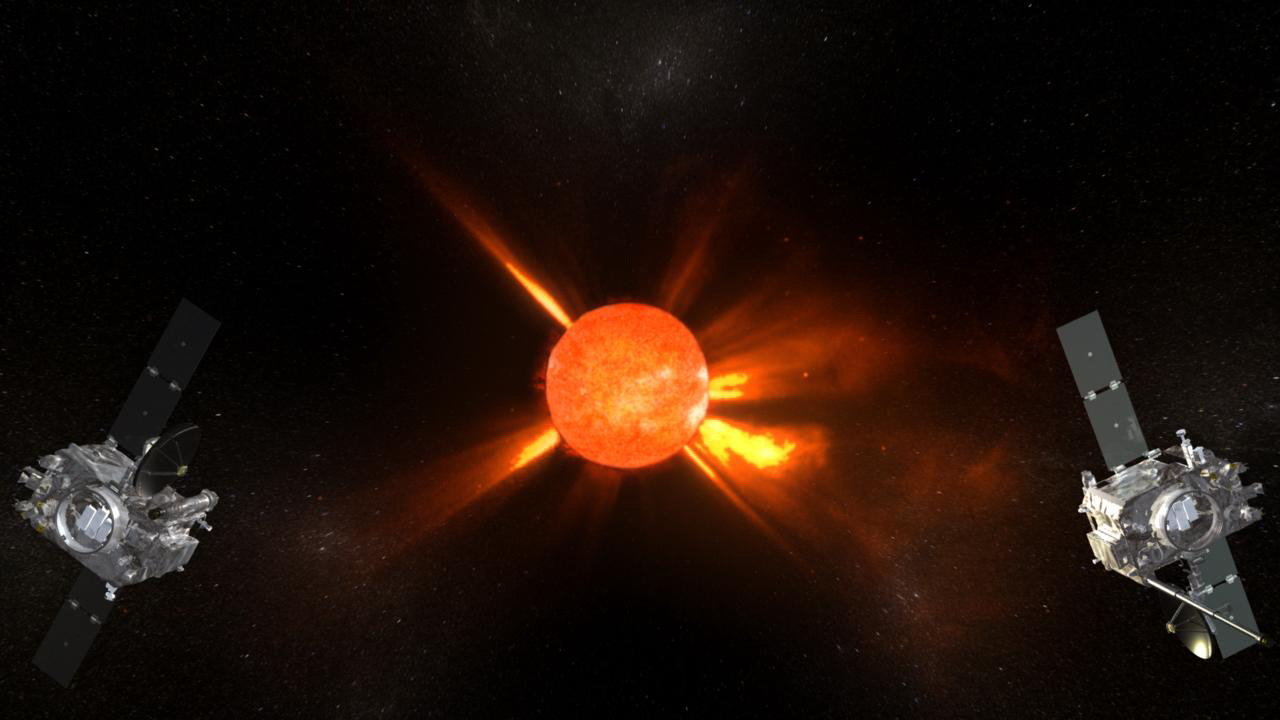NASA 'twin ship' celebrates its 5th birthday
NASA's Stereo twin spacecraft celebrated its fifth birthday on October 25, marking five years of studying the sun and its strong magnetic storms from a parallel perspective. his unique.

The STEREO spacecraft has obtained a large amount of aura because it is moving very close to the sun (February 26-28, 2011).
Stereo probe with the abbreviation of S olar TE rrestrial RE lations, was launched into space on October 25, 2006, with the task of observing the throne Why has not been studied before by us. And this spacecraft was not disappointing, it is currently facing the sun, which is a convenient position that allows scientists to view the entire surface of the sun at the same time.
The images sent from the Stereo ship allow scientists to better see the solar storm, which they may miss if they only look at a fixed point. . It also allows astronomers to learn more about these storms and the 'stars' that produce them.
" In the past 5 years, each Stereo spacecraft has moved to different positions in its orbit, where it can record images of anything from the sun ." Joe Gurman, a scientist in the Stereo Project of NASA Operations Center at Greenbelt, Md, adds: " It has helped us to get many new discoveries for the old problems of energy performance. solar . "
Track solar storms

These storms often occur in radiation explosions known as solar flares, as well as strong eruptions of solar plasma called aura eruptions (CMES), they can travel in space at speeds of up to 3 million miles per hour (5,000,000 km / h) or more.
Scientists are trying to understand as much as possible about solar explosions, as they can harm satellites and interrupt GPS signals, radio communications and nets. electricity. (The solar storm can also create giant light trails from North to South, causing aurora for astronomers on earth.)
The Stereo probe helped scientists track the sun's mass eruption (the CME phenomenon) for the first time, since it originated from the sun and then collided with the Earth. Researchers said: The data sent also showed that solar particles fired in space had a much larger number and a much wider range than previously thought. These energy particles can damage satellites and destroy astronauts' DNA. The 'twin' spacecraft also observed a number of other cosmic phenomena, such as comet approaching near the sun, even recording the tail of Encke's comet when it was destroyed by a spray. solar movement in April 2007.
Always on the move
Two spacecraft called Stereo-A and Stereo-B, will not stand in the position opposite the sun forever, but the Stereo-A will fly in a smaller orbit so faster than Earth, while Stereo-B moves with larger, slower orbits in the back.
By 2015, 'twin' probes will move to the far side of the sun, according to their own orbit until they are both opposite the earth again.
" Stereo was designed to help us find out more about what caused the mass eruptions of the sun (CMES) and how they moved, as well as to understand." The structure of these energy winds, I hope in the next five years will continue to make great strides in this area. '
- The oldest dog in the UK celebrates his 22nd birthday
- November 5: Google celebrates Michael Dertouzos's birthday
- Answer the mystery about the ship at the foot of the New York Twin Towers
- This is how NASA encapsulates 60 years of achievement in a 60-second video
- NASA's twin astronaut experiment
- The world's oldest gorilla celebrates its 56th birthday
- Voyager crossed the solar system
- 'Happy Birthday' officially became a free song
- Whose song is 'Happy Birthday'?
- Singing 'Happy Birthday' helps make meals more interesting
- Apple celebrates its fifth iPod birthday
- The origin, meaning of Buddha's Birthday and rituals should be done on the sacred day
 Van Allen's belt and evidence that the Apollo 11 mission to the Moon was myth
Van Allen's belt and evidence that the Apollo 11 mission to the Moon was myth The levels of civilization in the universe (Kardashev scale)
The levels of civilization in the universe (Kardashev scale) Today Mars, the sun and the Earth are aligned
Today Mars, the sun and the Earth are aligned The Amazon owner announced a secret plan to build a space base for thousands of people
The Amazon owner announced a secret plan to build a space base for thousands of people